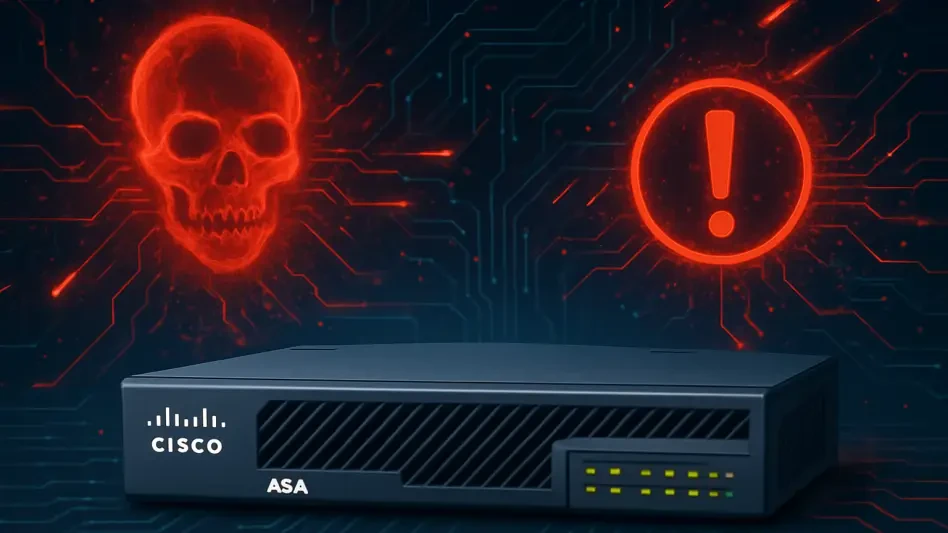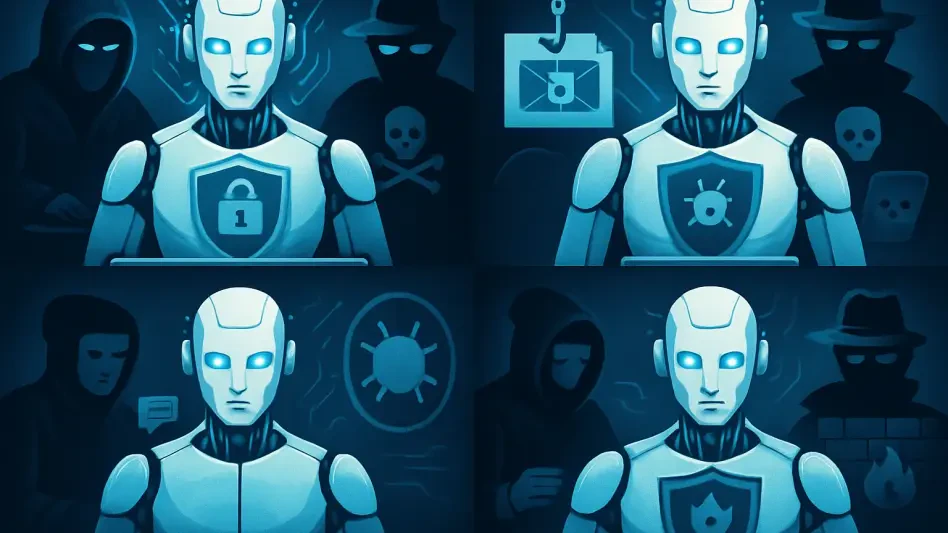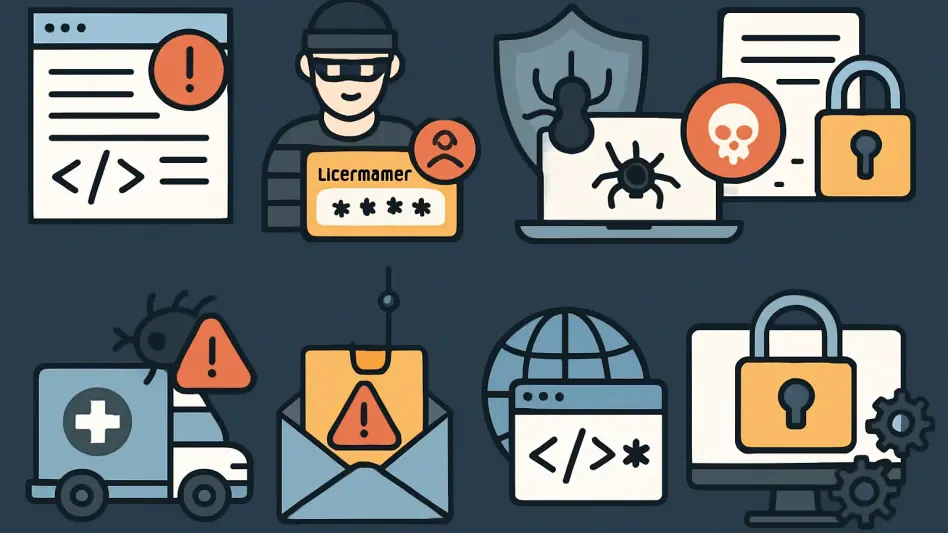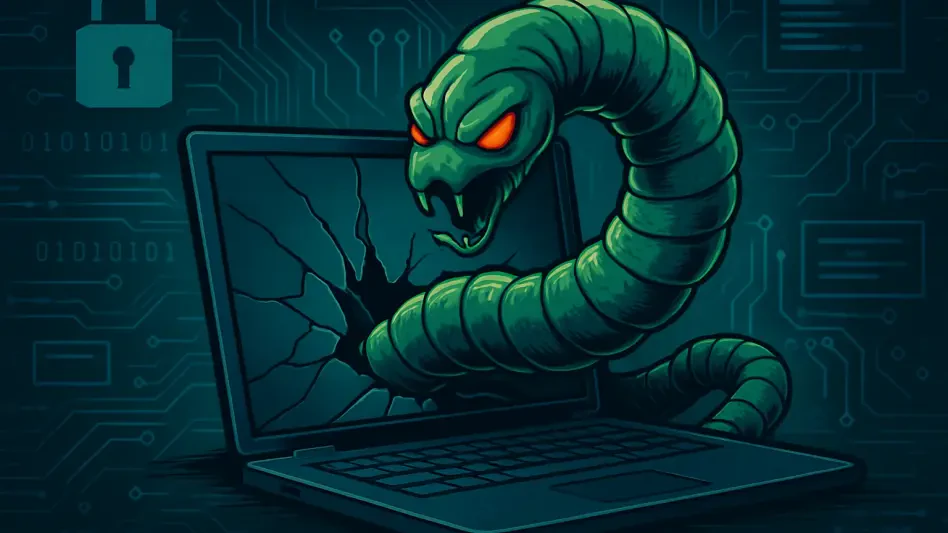In a chilling reminder of the ever-evolving nature of cyber threats, a state-sponsored actor has been discovered exploiting a previously unknown vulnerability in Cisco Adaptive Security Appliance (ASA) 5500-X series firewalls, targeting organizations across the globe in a sophisticated espionage operation. Identified as CVE-2025-20333, this zero-day flaw has allowed attackers to infiltrate critical network infrastructure with alarming precision, deploying advanced malware to steal sensitive data and maintain long-term access. Jointly reported by Cisco and the UK’s National Cyber Security Centre (NCSC), this campaign underscores the growing audacity and technical prowess of state-backed hackers. As legacy systems become increasingly vulnerable, the urgency to modernize security practices has never been clearer, prompting a deeper look into the mechanics of this attack, the tools involved, and the broader implications for network defenders striving to stay ahead of such high-stakes threats.
Unveiling the Threat Landscape
Sophistication of the Attack Strategy
The complexity of this espionage campaign sets it apart from typical cyberattacks, as it reveals a deep understanding of Cisco ASA firewall architecture by the perpetrators. This operation leverages a zero-day vulnerability to target devices that are often outdated or nearing end-of-life status, lacking essential security features like secure boot technology. The attackers’ primary objective appears to be long-term espionage, focusing on harvesting credentials and exfiltrating sensitive network traffic while employing advanced anti-forensics techniques to evade detection. Two malicious tools, RayInitiator and LINE VIPER, form the backbone of this assault, enabling persistent access and extensive control over compromised systems. The ability to blend malicious activities into legitimate network traffic further complicates identification, highlighting a significant evolution in the tactics of state-sponsored actors who prioritize stealth over disruption in their pursuit of valuable intelligence.
Beyond the technical intricacies, the strategic intent behind this campaign points to a well-funded and highly organized threat actor with specific geopolitical motives. The focus on enterprise-grade equipment like Cisco ASA firewalls suggests a deliberate targeting of organizations with critical infrastructure, where access to sensitive data can yield significant strategic advantages. The use of encrypted communication channels, including HTTPS WebVPN sessions with victim-specific tokens and RSA keys, demonstrates a meticulous approach to operational security. Additionally, the attackers employ secondary channels via ICMP requests tunneled through VPN sessions, ensuring that data exfiltration via raw TCP packets remains hidden. This level of sophistication indicates not just technical expertise, but also a profound understanding of organizational vulnerabilities, particularly the reliance on legacy systems that many entities have yet to replace or upgrade despite known risks.
Implications for Global Cybersecurity
The broader ramifications of this attack extend far beyond the immediate victims, signaling a troubling trend in the cybersecurity landscape where state-sponsored actors increasingly exploit zero-day vulnerabilities for espionage purposes. This incident serves as a stark warning about the dangers posed by outdated hardware in critical network infrastructure, especially as many Cisco ASA 5500-X models are scheduled to lose support in the coming years. The inability of these devices to receive timely updates or implement modern security protocols makes them prime targets for exploitation, amplifying the risk of successful breaches. Both Cisco and the NCSC have emphasized the urgency of addressing these gaps, noting that the persistence and stealth of this campaign could inspire similar operations by other threat actors seeking to capitalize on unpatched or unsupported systems worldwide.
Moreover, this espionage effort highlights a shift in attacker priorities, where the focus is on sustained access rather than immediate destruction or financial gain. The deployment of persistent malware like RayInitiator, which embeds itself into the device’s bootloader to survive reboots and upgrades, combined with LINE VIPER’s memory-resident capabilities, underscores the long-term nature of the threat. These tools allow attackers to execute commands at the highest privilege level, suppress detection mechanisms like syslog messages, and even reboot devices to thwart forensic analysis. Such tactics reveal a calculated effort to maintain a foothold in compromised networks for extended periods, posing a significant challenge to defenders. The growing reliance on advanced evasion techniques and encrypted command-and-control channels further complicates the task of identifying and mitigating these intrusions before irreparable damage is done.
Strategies for Defense and Mitigation
Immediate Response and Remediation Efforts
In response to this critical threat, Cisco has swiftly released patches to address the zero-day vulnerability, alongside detailed remediation guidance to help organizations secure their systems. The NCSC has complemented these efforts by providing detection advice and YARA rules to assist administrators in identifying signs of compromise within their networks. A notable indicator of infection is the unexpected rebooting of a device when a core dump is attempted for forensic purposes, a deliberate tactic by the attackers to erase evidence. Both organizations have stressed the importance of swift action, urging network administrators to apply updates immediately and investigate for any traces of malicious activity. The joint call to action reflects a shared recognition that delays in addressing this vulnerability could result in further exploitation, potentially exposing sensitive data and undermining trust in critical infrastructure.
Equally important is the focus on replacing obsolete hardware, as many of the targeted Cisco ASA 5500-X series firewalls lack the modern defenses necessary to counter such sophisticated attacks. With support for these models set to expire in the near future, organizations face a pressing need to upgrade to newer systems equipped with enhanced security features. This incident has exposed the inherent risks of maintaining legacy equipment, which often cannot support the latest patches or protect against advanced threats. Beyond immediate patching, a comprehensive review of network architecture is recommended to identify and eliminate similar weak points. By prioritizing proactive measures, such as continuous monitoring and regular audits, organizations can better position themselves to detect and respond to intrusions before they escalate into full-blown breaches with far-reaching consequences.
Building Long-Term Resilience
Looking ahead, this espionage campaign underscores the necessity of adopting a forward-thinking approach to cybersecurity that prioritizes resilience over mere reaction. Organizations must invest in modernizing their infrastructure, ensuring that hardware and software remain up to date with the latest security protocols to mitigate the risk of zero-day exploits. Beyond technical upgrades, fostering a culture of vigilance through employee training and robust incident response plans can significantly enhance an organization’s ability to withstand such threats. The sophistication of tools like RayInitiator and LINE VIPER serves as a reminder that attackers are continually refining their methods, necessitating equally dynamic defenses that evolve in tandem with emerging risks. Collaboration with industry partners and government agencies, as demonstrated by Cisco and the NCSC, also plays a vital role in sharing intelligence and resources to combat state-sponsored cyber operations effectively.
Ultimately, the lessons learned from this incident point to the critical need for a holistic security strategy that addresses both immediate vulnerabilities and long-term systemic weaknesses. Reflecting on the past, the joint efforts of Cisco and the NCSC in providing patches and detection tools proved to be a lifeline for many affected entities, yet the responsibility rests with administrators to implement these solutions promptly. The successful exploitation of outdated systems by state-backed actors serves as a wake-up call, driving home the importance of phasing out legacy hardware before support ends. By taking decisive steps to modernize and fortify their networks, organizations can better safeguard their assets against the persistent and evolving threats posed by sophisticated adversaries, ensuring a stronger defense posture for the challenges that lie ahead.








